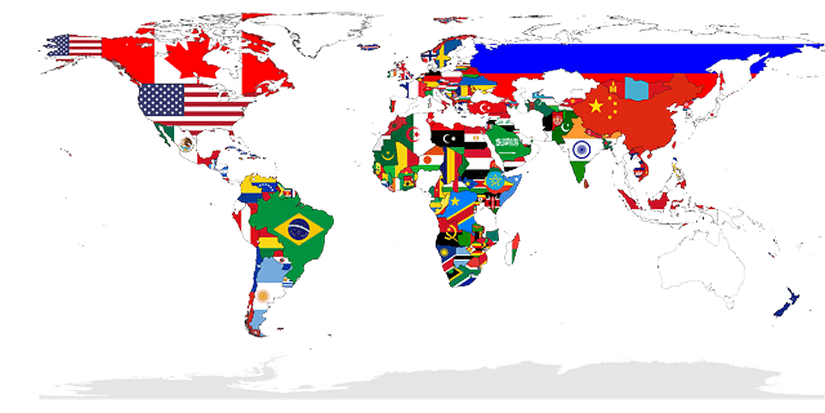

By JustMarkets
On Monday, the Dow Jones (US30) Index added 0.67% and rose to a one-month high, while the S&P 500 (US500) Index fell by 0.31%. The NASDAQ Technology Index (US100) closed negative 1.09% and fell to a one-week low. Weakness in technology stocks on Monday weighed on the Nasdaq 100 and the overall market after Truist Advisory Services downgraded the technology sector to Neutral from Elevated, citing valuation issues.
The Dallas Fed’s survey of the US manufacturing outlook for June rose 4.3 to negative 15.1, slightly weaker than expectations of 15.0. Comments from FOMC officials were mixed yesterday. Chicago Fed President Goolsbee said that the Fed may need to consider whether restrictive policies are putting too much pressure on the economy. San Francisco Fed President Daly said that if inflation falls more slowly than expected, it would be appropriate for the Fed to keep interest rates high for longer, but if inflation falls quickly or the labor market cools more than expected, it would be necessary to cut rates. Markets estimate the odds of a 25bp rate cut at 10% at the July 30–31 FOMC meeting and 65% at the next meeting on September 17–18.
Equity markets in Europe were mostly up on Monday. Germany’s DAX (DE40) rose by 0.89%, France’s CAC 40 (FR40) closed up 1.03%, Spain’s IBEX 35 (ES35) added 1.27%, and the UK’s FTSE 100 (UK100) closed positive 0.53%. European equity markets opened lower on Tuesday as cautious sentiment prevailed ahead of key US inflation data, the first presidential debate between Joe Biden and Donald Trump this week, and the French elections that begin this weekend.
Germany’s IFO Business Climate Index for June unexpectedly fell by 0.7 to 88.6 against expectations of a rise to 89.6. ECB executive board spokeswoman Schnabel said yesterday that the risk of new inflation spikes means the ECB is not committing to a fixed rate and remains data-dependent. Swaps discount the odds of an ECB rate cut by 25 bps at 5% for the July 18 meeting and 66% for the September 12 meeting.
WTI crude oil prices held just below $82 a barrel on Tuesday, at their highest levels in nearly two months, as geopolitical risks in Eastern Europe and the Middle East continue to support oil prices. The EU also imposed sanctions on more than two dozen ships carrying Russian oil and banned the transshipment of Russian liquefied natural gas (LNG) into the EU for shipment to other countries. In the Middle East, the war between Israel and Hamas showed no signs of abating as international mediation backed by the US has so far failed to reach a ceasefire agreement.
Free Reports:
Asian markets were predominantly rising yesterday. Japan’s Nikkei 225 (JP225) was up 0.54% for the week, China’s FTSE China A50 (CHA50) added 0.30%, Hong Kong’s Hang Seng (HK50) was unchanged for the day, and Australia’s ASX 200 (AU200) was negative 0.80%. Hong Kong stocks were up 135 points in Tuesday morning trading. The mood was buoyed after Chinese President Xi Jinping urged the country to boost innovation, particularly in some key technologies. Meanwhile, state media outlet Global Times reported that Beijing wants the EU to drop plans to impose preliminary tariffs on Chinese electric cars after the two sides agreed to discuss a possible compromise.
The Bank of Japan (BoJ) released a summary of opinions from its June meeting, showing that members were divided on how to proceed with the next interest rate hike. One member called for an early decision due to upside risks to inflation, while others urged caution and demanded more confirmation from upcoming data. Chief currency diplomat Masato Kanda said Japan is ready to take action against volatile yen movements at “any time,” emphasizing that currency movements should be stable and reflect fundamentals.
Malaysia’s annual inflation rate rose to 2.0% in May 2024 from 1.8% in the previous three months, exceeding market estimates of 1.9% and marking the highest level since August 2023.
The Australian dollar climbed above $0.666, hitting two-week highs and receiving support from a hawkish monetary policy outlook from the Reserve Bank of Australia (RBA), which is expected to cut interest rates much later than other major central banks. Markets have all but ruled out the possibility of an RBA rate cut this year and expect total easing to be just 43 basis points by the end of 2025.
The Reserve Bank of New Zealand (RBNZ) predicted at its last meeting in May that it would not start cutting rates until the third quarter of 2025. However, investors have fully factored in the rate cut in November, and more than 130 basis points of easing are expected by the end of 2025.
S&P 500 (US500) 5,447.87 −16.75 (−0.31%)
Dow Jones (US30) 39,411.21 +260.88 (+0.67%)
DAX (DE40) 18,325.58 +162.06 (+0.89%)
FTSE 100 (UK100) 8,281.55 +43.83 (+0.53%)
USD Index 105.49 −0.31 (−0.29%)
By JustMarkets
This article reflects a personal opinion and should not be interpreted as an investment advice, and/or offer, and/or a persistent request for carrying out financial transactions, and/or a guarantee, and/or a forecast of future events.
By JustMarkets The Dow Jones (US30) was up 1.23% on Thursday. The S&P 500 Index…
By ForexTime US500 rebounds 15% from 2025 low Meta, Microsoft, Amazon & Apple make almost…
By RoboForex Analytical Department On Friday, the major currency pair became further entrenched within a…
By Emmanuel Olugbade, Missouri University of Science and Technology Lithium-ion batteries are quietly powering large…
By Ross Bennett-Cook, Leeds Beckett University The United States is one of the top three…
By Sergi Basco, Universitat de Barcelona The International Monetary Fund (IMF) has just published its…
This website uses cookies.